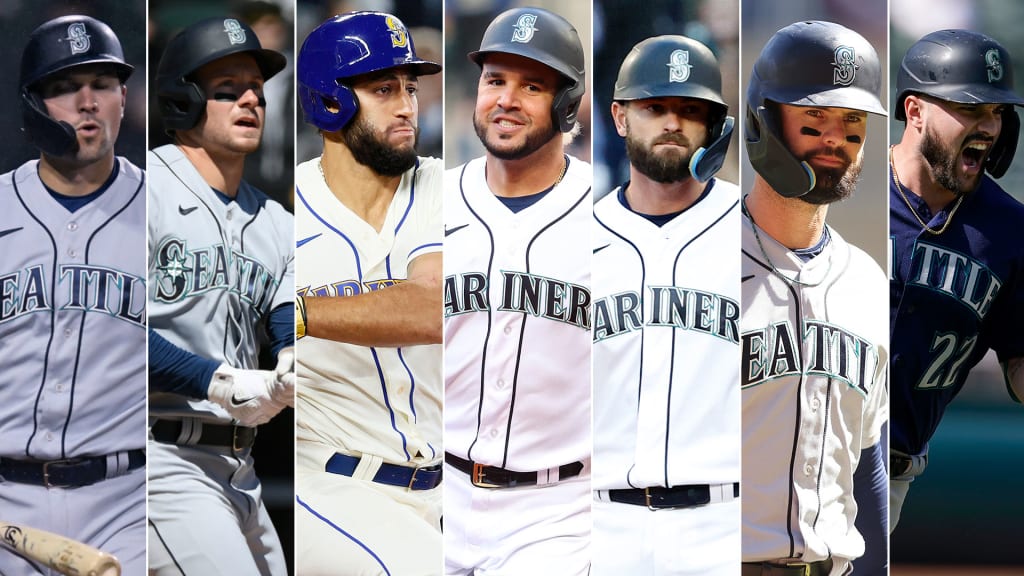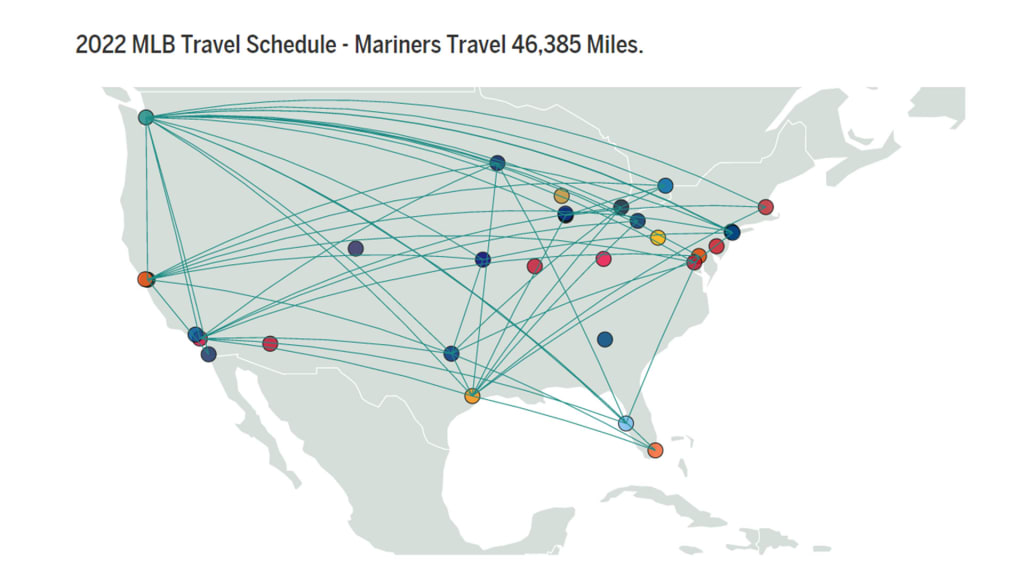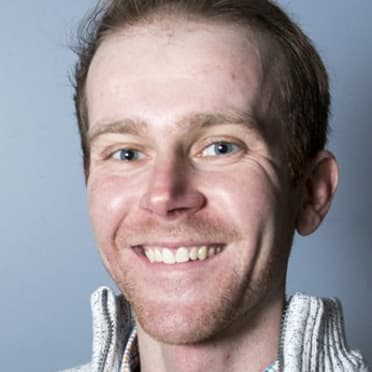
SEATTLE -- When Jerry Dipoto said in November that the Mariners would enter 2022 without a primary designated hitter, it didn’t exactly raise eyebrows. The intent was to fill the spot via a full-time rotation among their everyday players to get them off their feet more consistently. It’d also allow them to inject their bench bats into the lineup more regularly, notably Abraham Toro, and deploy more favorable matchups with opposing pitchers.
It’s not novel. Forward-thinking teams like the Rays and Astros have been using it as a load-bearing mechanism for some time, and it’ll likely become a more mainstream approach now that the DH has expanded to the National League. But it’s a first for the Mariners, who for years had employed elite sluggers with defensive limitations in the role, and it worked great. Nelson Cruz hit more homers than anyone during his four years in Seattle and Edgar Martinez DH’d his way into the Hall of Fame.
But times are changing. Only one team has used one DH for the entire 2022 season: the Angels with Shohei Ohtani, who has a unique case because he’s a unique player.
Seattle has used seven -- and that number will likely grow, especially when Kyle Lewis returns from knee surgery:
• Abraham Toro: 4 games (4-for-14, 2 2B, 1 HR, 4 RBIs, 3 K, 3 BB)
• Eugenio Suárez: 4 games (3-for-15, 2B, HR, RBI, 5 K, BB)
• Jarred Kelenic: 2 games (0-for-7, 3 K, BB)
• Adam Frazier: 2 games (0-for-7, K, BB)
• Mitch Haniger: 2 games (3-for-8, 2B, 2 HR, 5 RBIs, K, BB)
• Luis Torrens: 1 game (1-for-2, K)
• Jesse Winker: 1 game (0-for-5, 2 BB)
This seven ranks tied for fifth-most and trails Oakland’s lead of 11. Last year, the Mariners used 15, but that number isn’t as big as it seems, as Torrens was the primary guy from mid-summer on. Collectively, Mariners DHs have been worth 0.7 wins above replacement, per FanGraphs, tied for second-most in the Majors, with a 119 wRC+ (league average is 100), which is ninth-best.
“That was the plan as we went through the offseason and not just acquire a set DH .... So we'll just play around with it early on,” Mariners manager Scott Servais said. “But I don't see a particular set DH settling into this thing for quite some time.”
For a lot of these players, it’s a significant change -- they’ve never DH’d consistently before, or at all. Every player who has done so this year was polled on Seattle’s rotation strategy, other than Haniger and Torrens, who have been on the COVID IL.
The mental adjustment
Entering this season, only Haniger, Winker and Torrens had DH’d more than six games in their entire career among the Mariners’ rotation. And for Suárez, Winker and Frazier, they’d played in the NL full time before getting traded here in the offseason. Kelenic never DH’d before Opening Day, even including the Minors.
“It’s definitely been different,” Kelenic said. “Whether you think so or not, it's a position, and I've had to ask guys like Winker and Haniger, who have DH'd before because I never really have my whole life.”
Winker was moved to DH almost exclusively during the pandemic-shortened season in 2020, when it was first installed in the NL while he was with the Reds. At first, he was not a fan of it, but he came around quickly.
“At first, during the COVID season, I was very uncomfortable doing it,” Winker said. “I think I looked at it with a very youthful mind at the time. I know it was only two years ago, but how I looked at it, I took it too personally, when in reality, it was just what was best for the team and I think during that year I learned the good and having a DH day and there was a lot of patience with me to learn about it and learn a good routine. And so for me personally, I learned to embrace it.”
It’s no coincidence that Suárez and Toro have seen the most DH time this year. They are both natural third basemen, and the Mariners want to utilize Toro’s plus bat-to-ball skills in the lineup as often as possible, so it's been a flip-flop between those two.
“The biggest part right now [in April] is keeping warm and doing as much as you can," Suárez said. "My first [DH day] was better than my last one.”
The pregame routine
The most fascinating component to the DH rotation is that every guy treats it differently. In 2021, when Haniger was being eased back from three surgeries, he used DH days exclusively to rest, except for the in-game at-bats. Winker also slows things down more.
“I have my little routine and then I just pay attention to that,” Winker said. “I find that you just pay attention to what you have to do for the team that day. If it's just hitting, then you lock in on that.”
Kelenic, however, doesn’t change anything about his pregame routine.
“No, no, not at all,” he said. I’ll still run all the bases, and I'll do my outfield stuff just in case Hani goes down or Julio [Rodríguez] goes down or whoever, I’ve got to be ready.”
And for Toro, given how he’s moved to a super-utility role this year, he’s essentially driving to the ballpark every day with the possibility of moving all over. So, he’s still taking infield reps regardless.
“As far as before the game, everything is the same,” Toro said. “And during the game, every time my spot is coming up, I like to go in the cage a little bit. I got a lot more time to watch all my videos on the pitcher, and so that's a little bit of what changes in my routine.”
The in-game routine
Since the DH is in the dugout at all times, most guys are utilizing the indoor batting cages to stay fresh.
“When you're playing defense, you can go out there and be locked in on defense and it can get your mind off of the being at the plate or whatever,” Kelenic said. “And when you're DH’ing, it's about how can you get your mind off a hitting the stay locked in at the same time.”
But other guys don’t as much.
“You’re just trying to stay involved in the game,” Frazier said. “You’re trying to see how pitchers pitch guys and how he’s pitching and maybe get a tip on the guy. What’s he doing with his go-to? Maybe he doesn’t have his breaking ball. You can’t see that from the clubhouse, so you’ve got to be up there watching.”
Regardless of routine, nearly all find themselves having to more intently focus on the game because circumstances are constantly changing, and they’re not playing the field to see it through a defender’s lens.
“I’m telling you, you’ve got to still keep your mind in the game,” Suárez said. “Mentally, it’s like, ‘OK, I’m not playing defense, but I’ve got to keep my eyes on the pitching and defense and all that stuff.”
The body recovery
The Mariners traveled 48,401 miles last year, the most in MLB, 2,696 more than the next team and more than double the White Sox, who traveled the fewest. Geography will always be a disadvantage, so there’s a general awareness of fatigue over the 162-game season.
“I think it's brilliant,” Winker said. “It’s a way to keep your guys locked into the game while letting them catch their breath. It's very useful to use it that way.”

“I definitely feel fresher,” Frazier said. “That’s why you do it. You’re just running the bases, but other than that, you’re not on your feet for three hours.”
The communication with coaches
To get buy-in from players and to pull off a tactic like this, it requires consistent and constant messaging. The Mariners typically forecast their DH rotation ahead of every series (heavily due to pitching matchups) and adjust when needed (like if a player gets hurt).
“‘Skip’ does a really good job communicating to us before he put us in the DH,” Suárez said. “He told me like two days before my first one.”
But the pitch for this rotation began way back, and while some prefer it more than others, the Mariners tried to account for that in the rotation.
"Some guys don't like DH'ing," Servais said. "They just want to play in the field. That's when they play their best or when they hit the best. Other guys don't mind it. So, we'll just play around with it early on."
It might be a new fad, but the DH rotation is already accomplishing what the Mariners intended -- and it’s here to stay.


